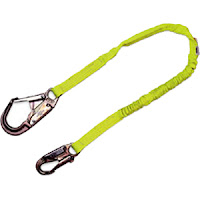 This is another guest blog: this time from Peter, aka: "Hagrid". Hagrid is an ex-EHO who works for me as a trainer, a provider of excellent Food Safety Consultancy, a good safety all-rounder and who gives first class "pragmatic" advice to clients.
This is another guest blog: this time from Peter, aka: "Hagrid". Hagrid is an ex-EHO who works for me as a trainer, a provider of excellent Food Safety Consultancy, a good safety all-rounder and who gives first class "pragmatic" advice to clients.
Health and safety documentation within businesses varies
from bureaucratic nightmares that no one will ever read or use to total non
existence. Somewhere in the middle is
sensible, concise documentation that can clearly be understood and used. Apart from being a useful management tool,
good health and safety documentation will support a defence in law when things
go wrong.
The grounds for prosecution in health and safety law are not
based so much on whether an event took place, but on the apparent lack of
controls in place. In fact there does
not have to be any accident for a prosecution to be successful, the enforcement
officer just has to prove that reasonable health and safety procedures were not
there. Much of the evidence leading to
prosecution and most of the argument in court will be based on two issues: were
adequate risk assessments carried out and did adequate training take
place. Without adequate documentation it
is almost impossible to defend these key points.Civil cases for compensation are, of course, based on outcome: the degree of suffering or loss. They also consider, however, what efforts the defendant made to reduce the risk from the particular hazard being considered and how much the claimant may have contributed to their own suffering or loss. A defence against a claim can only be attempted with clear health and safety records and documentation.
The most important documents in defending the above cases are: risk assessments and their associated method statements, training records and the accident record.
The law requires all work activities to be risk assessed. We obviously do not document all risk assessments, or we would be buried in paper, but we are legally required to document ‘significant findings’ from risk assessment. That means we should record findings were the risk is deemed to be greater than normal day to day life. That is why we generally do not have written method statements for crossing the road, even though it may be the most dangerous thing you do at work, but we do have them for operating fork lift trucks or food slicers. We do not have to record the whole risk assessment process as long as it is obvious that the resulting method statement is clearly derived from a risk assessment. Where we are not required to provide written findings from risk assessment we may still be required to prove we risk assessed the activity. This can usually be done by referring to adequate checklists and training documentation.
Training records must demonstrate that every employee has had adequate induction training and specific training for the tasks they are required to carry out. The record should be dated and signed by the trainer and the trainee or certificated by a reputable third party. The content of the training must be demonstrated by sufficient detail or a recognised syllabus. It would not be adequate for the record to simply state ‘health and safety’ or ‘fire safety’.
The accident record must be in sufficient detail to act as a useful management tool in preventing future accidents, to defend against false and exaggerated claims and to support valid claims. Remember that a claim could take place long after everyone has forgotten the details of an accident, so the record must show clearly the nature and extent of the injury, how the accident occurred and what action was taken after the event.
Let us help you. Contact us through the website



